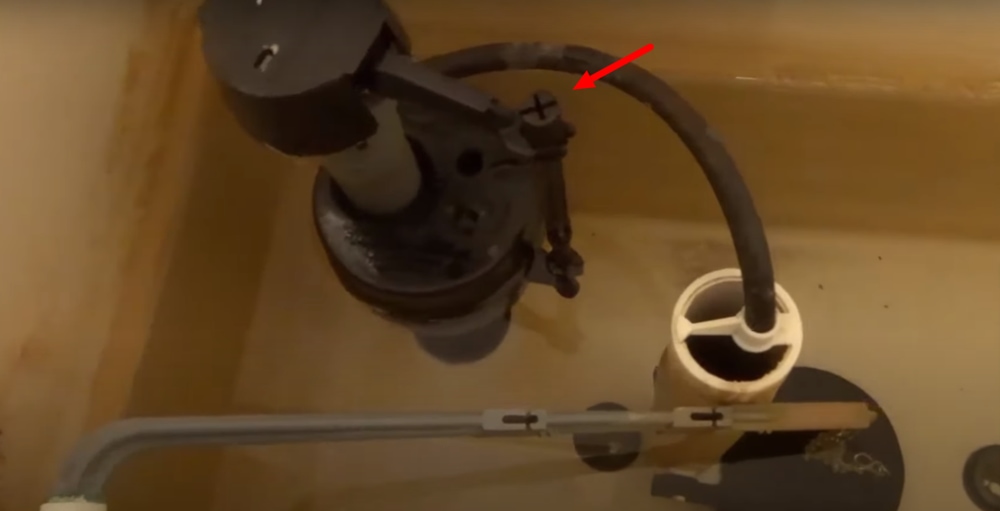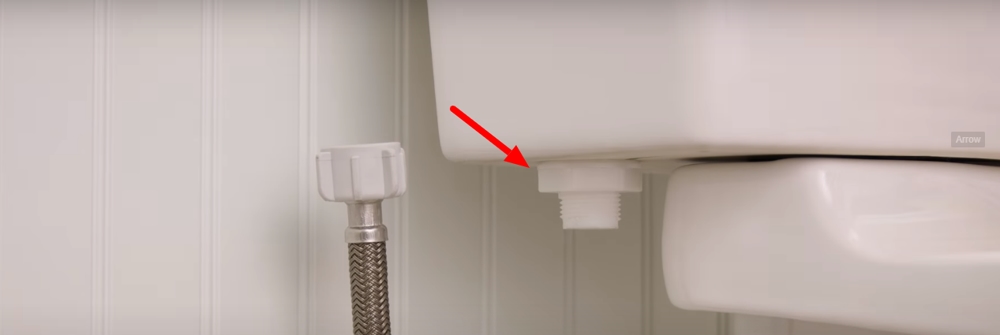Receding water level in toilet bowl happens due to damaged toilet components. It is a common problem and can usually be solved if you know what to look for and how to fix it. In this article, we will discuss how you can fix a receding water level in a toilet bowl.
Receding Water Level in Toilet Bowl – Causes & Fixes
Clogged Vents
Vents are installed to supply fresh air to every toilet in your home. It helps the drainage system move wastewater through pipes every time you flush a toilet or drain a sink. These air vents also prevent sewer gases from entering the home and allow wastewater odors and gas to escape.
A blockage in these vents can cause a low water level in the toilet bowls. A blocked vent pipe sucks air from the drainpipe causing gurgling and bubbling sounds. It creates a vacuum that draws the toilet bowl water level down. Here’s what you need to do to ensure that blacked air vents are not the reason behind the receding water level in the toilet bowl.
- Locate the vent opening at the roof for that toilet.
- Clear the debris around the vent to access its opening. Some vents have screwed caps; open with a screwdriver.
- Use a torch light to see any blockage or debris accumulation.
- Use a water hose to pour water down the vent.
- If the pipe starts overflowing with water, there is a blockage.
- You’ll need a long auger to clear the blockage in the pipe. You can buy an electric auger, but a manual one would be perfect for household applications. Amazon Basics 25-foot manual auger is an affordable and effective plumbing snake cable for this task.
- Push the auger inside till you reach a point of resistance. This should be the blockage causing receding levels in the toilet.
- Twist and try to clear the blockage as you work with it. Keep working it until you get resistance-free movement.
- Pour some more water down the lane to see if it overflows again. If it doesn’t, it means the vents are now clear.
- Pull out the auger cable and head back to your toilet. Clear the P-trap to remove any blockages in it.
- Flush the toilet to see if the water level is back to normal. If it doesn’t, it means there is a crack in the toilet bowl.
Clogged Drain
If the water level in the bowl drops very slowly after bowl refilling stops, you have a partial drain clog. It could be in the toilet trap or somewhere nearby in the drain. Use a toilet augerto clear the toilet and drain.
Cracked Toilet Bowl
If the vent is clear, your toilet may have some other problem. It may have a small leak causing lower water levels in the toilet bowl.
Here’s how you can detect and repair a toilet bowl or tank leak.
- Place some rags around your toilet bowl and tank to locate the leak. Don’t forget to inspect plumbing connections while you are checking the toilet.
- Close the incoming water to the tank and flush the toilet.
- Scoop out all the water in the toilet bowl using a small cup and an absorbent sponge.
- Use a flashlight to see where the crack is inside the toilet bowl.
- Please remember that only hairline cracks can be repaired. Bigger cracks may require replacing the toilet.
- Apply some caulk using plumbers putty or use a silicone waterproof sealant. Gorilla Waterproof Caulk & Sealant is good for repairing hairline cracks.
- Let the sealant dry for a few hours. Flush the toilet after the sealant is completely dry to see if the water level stops receding.
- If not, you would probably need to replace the toilet. But before you do it, try out the following fixes. They might work and save you from making a costly replacement.
Wrong Setting on Toilet Tank Float
Many toilet tanks have a float with a screw and a fill tube that controls the water level in the bowl. Open the tank to see if you have the same model shown in the image below.

Use a screwdriver to turn the screw clockwise. You will see that the float starts to move up, allowing more water in the fill tube. It will increase the water level in the bowl.
Damaged Fill Tube in Toilet Tank
So you just checked the setting on the float, don’t forget to check the fill tube. It may happen that the fill tube may have shifted or is damaged due to wear and tear. The connection to the overflow tube may come off at times. Inspect the tube. Replace it if it is damaged.
Damaged Fill Valve
The fill valve is responsible for filling the tank and bowl. It can get damaged over time due to wear and tear.
The only solution to a malfunctioning fill valve is replacing it. The process is easy and doesn’t require a plumber. You will need a toilet fill valve kit, an adjustable wrench, a catch bin (optional), a towel, and a screwdriver.
Follow the steps below to replace the fill valve in your toilet tank.
- Shut off the water supply and flush the toilet.
- Remove the tank’s lid and the football.
- Unscrew the mounting nut with an adjustable wrench. This nut is located below the tank near to water connection.

- Take out the old valve.
- Adjust the height of the new valve so you can connect it easily with the fill tube.
- Insert the shank into the tank opening and connect it with the water supply. Connect the water line with the fill tube.
- Open the water supply and check the water level in the toilet bowl.
Clogged Inlet Holes
Another reason behind the receding water level in the toilet bowl is clogged inlet holes. These holes are also known as rim jets. They are located just under the rim of the toilet. These holes can get clogged over time, depending on water chemistry. Homes with hard water face such problems more often than those with soft water.
You need to unclog these holes to ensure water flows freely to the toilet bowl. You can use hot vinegar to clear the deposits. Don’t use bleach or other corrosive substances in the toilet tank as it can damage the plastic parts.
Pour hot vinegar into the tank via the overflow tube. Let it sit for 1-2 hours. Use a straightened-out wire hanger to clean the holes.
Faulty Flapper Valve
A flapper valve sits at the bottom of the tank and permits water into the toilet bowl after every flush. If the water level in the bowl decreases after a flush, the flapper valve must be replaced.
Damaged Toilet Seal
A rubber seal is used when a toilet is installed on the floor. This seal can get damaged or crack if the toilet is rocked back or forth. Though it happens rarely, you need to check if everything else is working perfectly.
The only solution is to replace the damaged seal, and you may also need to replace the toilet.
Tips to Prevent Water Loss from Toilet Bowl:
- Make sure air vents aren’t clogged. Make vent cleaning part of yearly house cleaning.
- Replace the fill valve in the toilet tank after five years.
- Inspect the toilet for leaks and cracks if you suspect water leakage.
- Keep your toilet tank and bowl clean, free from molds and rings, so you can use them for a long time.
Why does the water level in the bowl move when it is windy outside?
Toilet bowl water level decreases on windy days due to decreased pressure within the plumbing system.
So if you live in a windy area, the low water level is not to be worried about. This is a scientific principle of fluid dynamics called Bernoulli’s principle.
Final Words
You may have a low water-level toilet model. So, before checking why the water level is low in your new toilet, check the user manual for the exact water level in the toilet bowl.

Leave a Reply